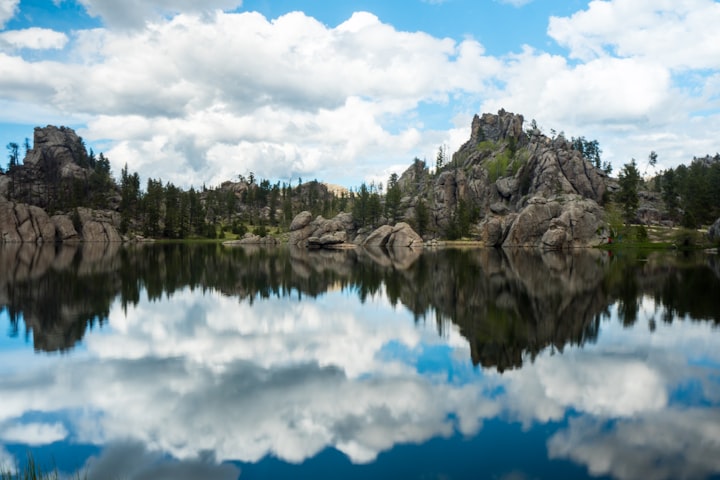History of the City Beautiful Moment
What if there was a People Are Beautiful movement?

The fountain pictured above is now known as The Women’s Leadership Fountain, and it's the second and oldest fountain built in Kansas City in 1899. This fountain was designed by George Kessler and John Van Brunt.
When I first learned about the City Beautiful movement, I started wishing the concept could be applied to people. Ideally, it sounds great but from a realistic point of view, it’s unlikely to occur. However, we can be a positive influence on those around us to help make the world a better place.
That shared, let’s move on to a short history lesson about a movement that exploded into beautifying cities across the country before 1930.
The City Beautiful movement which began in the late 1800s stretching through to the 1920s was inspired to help beautify cities in the United States. Kansas City, Chicago, Philadelphia, and Washington D.C. were some of the cities participating in this plan.
I’m more familiar with Kansas City’s developed boulevards because I used to work downtown, but have lived in the metropolitan area since moving to Kansas City as a teenager.
The story of the transformation of Kansas City during the last decades of the nineteenth century from muddy squalor to a gleaming paradigm of the City Beautiful holds inspiration for those who seek examples of transcending vision and resolve in city leadership. The development of Kansas City’s interlocking system of parks and boulevards enhanced virtually all elements of urban life then, as it still does today. (Source.)
The planning to create nicely constructed boulevards in Kansas city alongside neighborhoods and beautiful parks received praise from other city planners in the country. One key figure considered to be the American pioneer of city planning and landscape architecture was German-born George E. Kessler.

Kessler steered the City Beautiful movement in Kansas City. One of the boulevards constructed, the Paseo Boulevard. is the longest boulevard and one of the oldest ones in Kansas City. One of the purposes of constructing boulevards in the urban development of the city was to connect residential areas.
Kessler also wanted people to be connected with nature with additional roadways like “Benton Boulevard, Independence Avenue, Admiral Boulevard, Gladstone Boulevard, Linwood Boulevard, Armour Boulevard, and Broadway were to be connecting points for people to travel to and from the different parks.” (Source.) These are popularly traveled boulevards in the city.
The Paseo initially went from Independence Avenue all the way to 17th Street through Kansas City and through the beginning of the 1900s, The Paseo kept stretching further south to 79th Street. The Paseo purposefully curves along the terrain to display the beauty of nature.
Where did The Paseo get its name?
The Paseo was named by Kessler after a roadway in Mexico city called Paseo De La Reforma which was a great roadway designed after European boulevards. It was Kessler’s hope that The Paseo like other designed boulevards in the city would be a long-lasting framework for the city.
At first, people in the business community frowned on the idea of the new building system due to having to pay higher taxes so they reached a compromise for the boulevards to be built away from business districts and nearer to residential areas to connect them.
Through the years, changes were made including 71 Highway which added aesthetic value to a drive through the city that connects neighborhoods and highways.

The image above used to be the Paseo Lake extending from 16th to 17th Streets, but the lake was eventually drained in 1907.
The Paseo, one of Kansas City’s first boulevards and noted for its fashionable apartments and residences at the turn of the century, remains Kansas City’s longest boulevard, extending from Admiral Boulevard on the north far south past Swope Park to 79th, a distance of about 20 miles. (Source.)
The first traffic light-controlled intersection in the city was located at The Paseo and Linwood Boulevard (see below). This light is made of cut-stone and designed by architect Edward Buehler Delk. The light was installed in the 1920s.

There are current projects in the works to restore and revitalize areas of Paseo Boulevard.
The idea of organized comprehensive urban planning arose in the United States from the City Beautiful movement, which claimed that design could not be separated from social issues and should encourage civic pride and engagement. Its influence was most prominent in cities such as Cleveland, Chicago, and Washington, D.C. (Source.)
Chicago
In 1893, the City Beautiful movement gained momentum with Chicago’s World’s Columbian Exposition. The fair’s construction was steered by Daniel H. Burnham. His plans took on ideas from Paris-trained architects. Frederick Law Olmsted, Sr., designer of Central Park in New York City, designed the lagoons and green areas of the fair. In 1909, Burnham and his co-architect and urban planner, Edward H. Bennett published their plan that focused on avenues stretching out from a civic center in a 60-mile radius.
A rail system was included and lots of parks to fulfill the nature aspect of beauty. The planners were also focused on the lakefront. They wanted a highway system that wasn’t complicated and connected the city to the neighboring suburbs. The construction of the plan began in 1909 and would continue for 20 years. It wasn’t completely finished due to the 1929 Depression.

Lake Shore Drive winds through beaches and parks and was an important part of Burnham and Edward H. Bennett’s plan to keep this lakefront always open and “free.”
Philadelphia
Starting at Philadelphia City Hall, winding around Logan Circle, and ending close to the Philadelphia Museum of Art is the Benjamin Franklin Parkway.
Philadelphia, like Kansas City, underwent urban renewal also. The Benjamin Franklin Parkway is surrounded by museums, parks, statues, and flags from other countries. While the initial proposal for the parkway began in 1906, construction didn’t start until 1917. French landscape architect Jacques Gréber contributed to the plan of the parkway in 1917 to emulate the Champs-Élysées in Paris, France. Also, because of the centralized location, a lot of events are held here.

Washington D.C.
The urban development plan for Washington D.C. was expansive and took decades to bring to fruition. With the formation of the Senate Park Commission in early 1901, the planning stages for improving the surrounding area of Washington D.C. included members of the commission traveling to Europe to see its urban designs.
The proposition of the newly named McMillan Plan would be to eliminate old designs from the Victorian era. To read and review the extensive project, see 1901–1928: The Senate Park Commission Plan Charts a New Direction.

Urban planning as the twentieth century would know it developed out of the City Beautiful — both as a phase of it and a reaction to it — and its coalition of planners, of paid experts and unpaid volunteers, of architects, artists, civic officials, journalists, business people, and interested ordinary citizens. (Source.)
The end of an influential City Beautiful movement was chiefly due to the Depression of the 1930s.
Getting back to my notion of a People Are Beautiful movement, so many things start with just an idea. What kind of magic do you drop in the world?
Thank you for reading.
© Cathy Coombs
About the Author
Earning a B.A. in English Journalism & Creative Writing in my 40s affirmed my love for literature, language, and writing. I published three eBooks in 2022 and am currently finalizing a true-crime book that I spent over 10 years researching.
About the Creator
Cathy Coombs
Earning a B.A. in English Journalism & Creative Writing confirmed my love of literature. I believe every living experience is tied to language, and words influence us all.
Website. Write, self-publish, and self-market. Go.






Comments
There are no comments for this story
Be the first to respond and start the conversation.